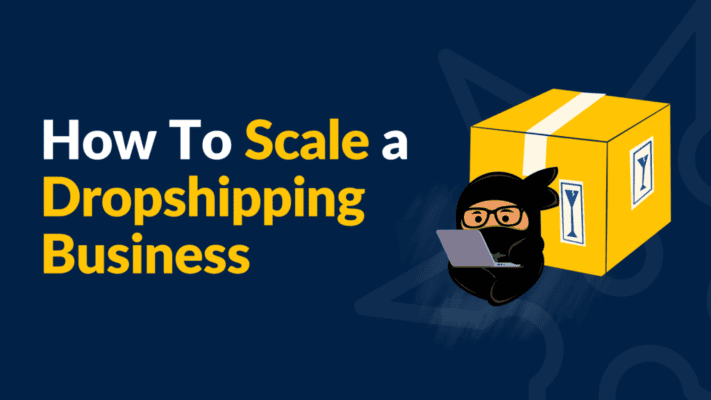How Do You Manage Your Orders in 2024 When Dropshipping Fulfillment on Shopify?
Managing your orders in 2024 when dropshipping fulfillment by any supplier on Shopify involves a combination of automation and manual oversight. With the help of a reliable dropshipper and Shopify app store for free, you can easily fulfill dropshipping in a seamless manner. The order fulfillment process starts when a customer places an order on your ecommerce store. The dropshipper then processes the order, ships the product directly to your customer, and provides you with tracking information to share with the buyer. This means you don’t have to worry about managing inventory levels or shipping costs. Instead, you can focus on marketing and growing your business.
By collaborating with reliable suppliers for your dropshipping, you can ensure that your customers receive their orders in a timely manner. Whether you’re selling products from AliExpress or working with a wholesaler, the key is to maintain a strong supply chain that can fulfill dropshipping efficiently. With the help of Shopify’s collective resources delivered directly to your Shopify store, you can start your free trial and fulfill the order with ease.
What is Dropshipping and How Does it Work on Shopify?
In the realm of ecommerce, dropshipping is a business model where an online store doesn’t keep the products it sells in stock. Instead, when a store sells a product, it purchases the item from a third party and has it shipped directly to the customer. Shopify, a popular ecommerce platform, facilitates dropshipping by providing a user-friendly interface for store owners to manage their products and orders efficiently.

Benefits of using Shopify for dropshipping
Using Shopify offers numerous advantages for dropshipping businesses. It provides an easy-to-use platform to set up and manage an online store without the need for technical expertise. Additionally, Shopify integrates with various apps and tools that automate order processing and fulfillment, saving time and effort for store owners.
How to set up dropshipping on Shopify

Setting up dropshipping on Shopify supplier can be a great way to start an online business without having to invest a lot of money upfront. With the dropshipping business model, you don’t need to keep inventory or ship to yourself. Instead, you route orders to a reliable dropshipping partner who will package and ship the products directly to your customers. This allows you to focus on marketing and growing your ecommerce business. You can choose from a wide range of dropshipping products to sell and set your own profit margins. Shipping time and fulfillment refers to how quickly your partner can ship to your customers, so make sure to choose a reliable dropshipping partner.
To set up your Shopify store for dropshipping supplier, you’ll first need to open an account and pick a plan that works for you. Once you’re set up, you can start adding products to your store and fulfillment refers to how your partner will ship based on location. Your partner will then ship orders directly to customers, allowing you to focus on growing your business. You can also utilize print-on demand services to create custom products without holding any inventory yourself. As you receive dropshipping on Shopify, your partner will handle the rest and ensure timely delivery to your customers.
To start a dropshipping business on Shopify, you can simply create an account, choose a pricing plan, and add products to your store from dropshipping suppliers. With Shopify’s seamless integration with dropshipping apps, you can connect to multiple suppliers and easily manage your inventory.
How to Start to Fulfill Orders in Dropshipping on Shopify?
Dropshipping ecommerce has become a popular business idea for entrepreneurs looking to start an online shop without carrying any inventory management and order fulfillment. In 2024, the Shopify collective is expected to see a surge in dropshipping in 2024. When a customer places an order on their shop, they simply dropship the order to the supplier who then ships the new product in their fulfillment center directly to the customer.
Order fulfillment in dropshipping refers to the process of receiving, processing, and delivering customer orders. In the context of Shopify dropshipping or Amazon as well, fulfilling orders involves managing product stock, arranging shipping, and ensuring timely delivery to customers.
Tools and apps for automating order fulfillment
Shopify offers a range of apps and tools that automate order fulfillment supplier, such as Oberlo and DSers. These applications help streamline the process by automatically sending orders to suppliers, tracking order status, and providing customers with tracking numbers for their shipments.
Dealing with dropshipping suppliers for order fulfillment
Effective communication with dropshipping suppliers is crucial for smooth order fulfillment. Establishing clear agreements on processing times, shipping methods, and quality control ensures that orders are fulfilled accurately and promptly.
What Are the Challenges Faced in Dropshipping Order Fulfillment?
Despite its benefits, dropshipping order fulfillment comes with its challenges. Managing inventory effectively to meet demand, resolving shipping issues, and handling returns and refunds are common hurdles faced by dropshippers on Shopify.

Managing inventory and stock availability
Ensuring that products are in stock and available for customers is essential for a successful dropshipping business. Using inventory management tools within Shopify can help track stock levels and prevent overselling.
Handling shipping and delivery issues
Shipping delays, lost packages, and incorrect addresses are common issues that can arise during order fulfillment by suppliers. By proactively communicating with customers and using reliable shipping providers, these challenges can be mitigated.
Dealing with returns and refunds
Processing returns and refunds promptly and efficiently is crucial for maintaining customer satisfaction. Clear return policies and responsive customer support can help address these issues effectively.
How to Scale and Grow Your Dropshipping Business in 2024?

Scaling a dropshipping business involves expanding operations to increase revenue and reach a larger customer base. In 2024, focusing on strategic growth tactics, diversifying product offerings, and leveraging marketing techniques can help elevate your dropshipping store to new heights.
Strategies for scaling your dropshipping store
Implementing strategies such as influencer partnerships, social media marketing, and search engine optimization can drive traffic to your store and boost sales. Analyzing data and monitoring performance metrics can inform your scaling efforts.
Expanding product offerings and diversifying suppliers
Introducing new products and collaborating with multiple dropshipping suppliers can help broaden your product range and cater to diverse customer preferences. Regularly updating your product catalog keeps your store fresh and appealing.
Utilizing marketing techniques for business growth
Utilize marketing channels like TikTok, Instagram, and email campaigns to promote your products and engage with your target audience. Crafting compelling ad copies and appealing visuals can attract potential customers to your store.
What Are the Latest Trends and Technologies in Dropshipping Order Management?
In 2024, the landscape of dropshipping order management is evolving with the integration of advanced technologies and innovative strategies. Incorporating AI and machine learning for processing, leveraging data analytics for optimizing operations, and adopting modern methods are shaping the future of dropshipping supplier .
Integration of AI and machine learning for order processing
AI-powered tools can automate processing, predict customer behavior, and enhance decision-making processes. Machine learning algorithms analyze data to optimize inventory management and streamline fulfillment supplier workflows.
Utilizing data analytics for optimizing order management
Data analytics tools provide valuable insights into customer trends, inventory performance, and sales forecasting. By leveraging data-driven analytics, dropshippers can make informed decisions to improve efficiency and profitability.
Trends in fulfillment methods such as dropshipping warehouses
Emerging trends like utilizing dropshipping warehouses and third-party fulfillment services offer scalability and efficiency benefits for dropshipping businesses. These modern fulfillment methods help store owners expedite order processing and meet customer demands effectively.

Private Agent for Dropshipping Success